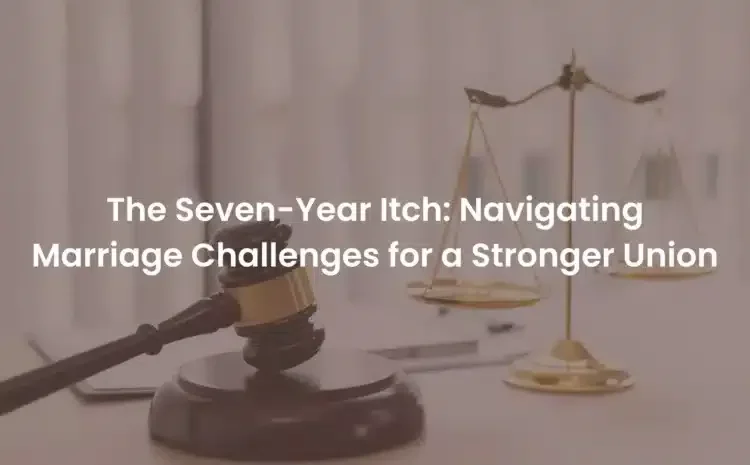The Seven-Year Itch: Navigating Marriage Challenges for a Stronger Union
Introduction
Marriage, often seen as the union of two individuals committing to a lifetime together, is not without its challenges. Recent divorce statistics in Singapore shed light on the phenomenon known as the “seven-year itch,” indicating a peak in marital dissatisfaction and breakups between the fifth and tenth years of marriage. In this blog post, we delve into the findings, explore the reasons behind the seven-year itch, and discuss strategies to strengthen marriages for a more resilient and enduring union.
The Seven-Year Itch: Unveiling the Statistics
According to the Statistics on Marriages and Divorces 2022 released by the Department of Statistics (DOS), 9.6% of Singapore resident couples who wed in 2001 ended their marriage between the fifth and tenth wedding anniversary. This phenomenon, often attributed to boredom or dissatisfaction, is a widely recognized pattern in the trajectory of many marriages.
Understanding the Seven-Year Itch
Theresa Pong, counselor director at the Relationship Room, highlights research findings supporting the seven-year itch. Psychologist Dr. John Gottman observed that unhappy couples often take an average of six years before seeking help. This period is characterized by conflicts, unhappiness, and trust issues. By the time couples realize the need for assistance, the healing process becomes more challenging, leading some to consider divorce.
June Yong, head of the research and editorial team at Focus on the Family Singapore, adds another dimension to the discussion. Couples typically settle into their roles and routines during the first few years of marriage. As challenges such as career, children, and finances arise in the subsequent years, conflicts may surface. Without a strong foundation in communication, teamwork, and conflict resolution, couples may find themselves drifting apart.
Factors Contributing to the Seven-Year Itch
Singapore Management University sociology professor Paulin Straughan notes that younger couples, having lower tolerance for dissatisfaction, may be less willing to endure an unhappy marriage beyond the initial five years. As expectations clash with reality, a reluctance to stay in an unsatisfying relationship becomes more pronounced.
Positive Trends and Solutions
Despite the prevalence of the seven-year itch, the DOS data reveals a positive trend among more recent marriage cohorts. The cumulative proportion of marriages that dissolved before the 10th anniversary decreased, signaling greater stability in recent marriages compared to earlier cohorts.
The Ministry of Social and Family Development (MSF) emphasizes the importance of support for marriages, particularly in the early years. Various programs, including marriage preparation, mentoring, and enrichment initiatives, aim to equip couples with the tools needed for a healthy and enduring marriage. Family counseling services, available through Strengthening Families Programme@Family Service Centre (FAM@FSC) and the FAM@FSC Online Counselling platform, offer additional resources for couples facing challenges.
Conclusion
The seven-year itch is a reality that many couples face, but with awareness, understanding, and proactive efforts, marriages can weather the storm. The decline in dissolution rates among recent marriage cohorts indicates progress, emphasizing the significance of support programs and initiatives. As Minister of State for Social and Family Development Sun Xueling affirms, the MSF will continue to collaborate with partners, social service agencies, and community groups to strengthen marriages and foster enduring relationships.

